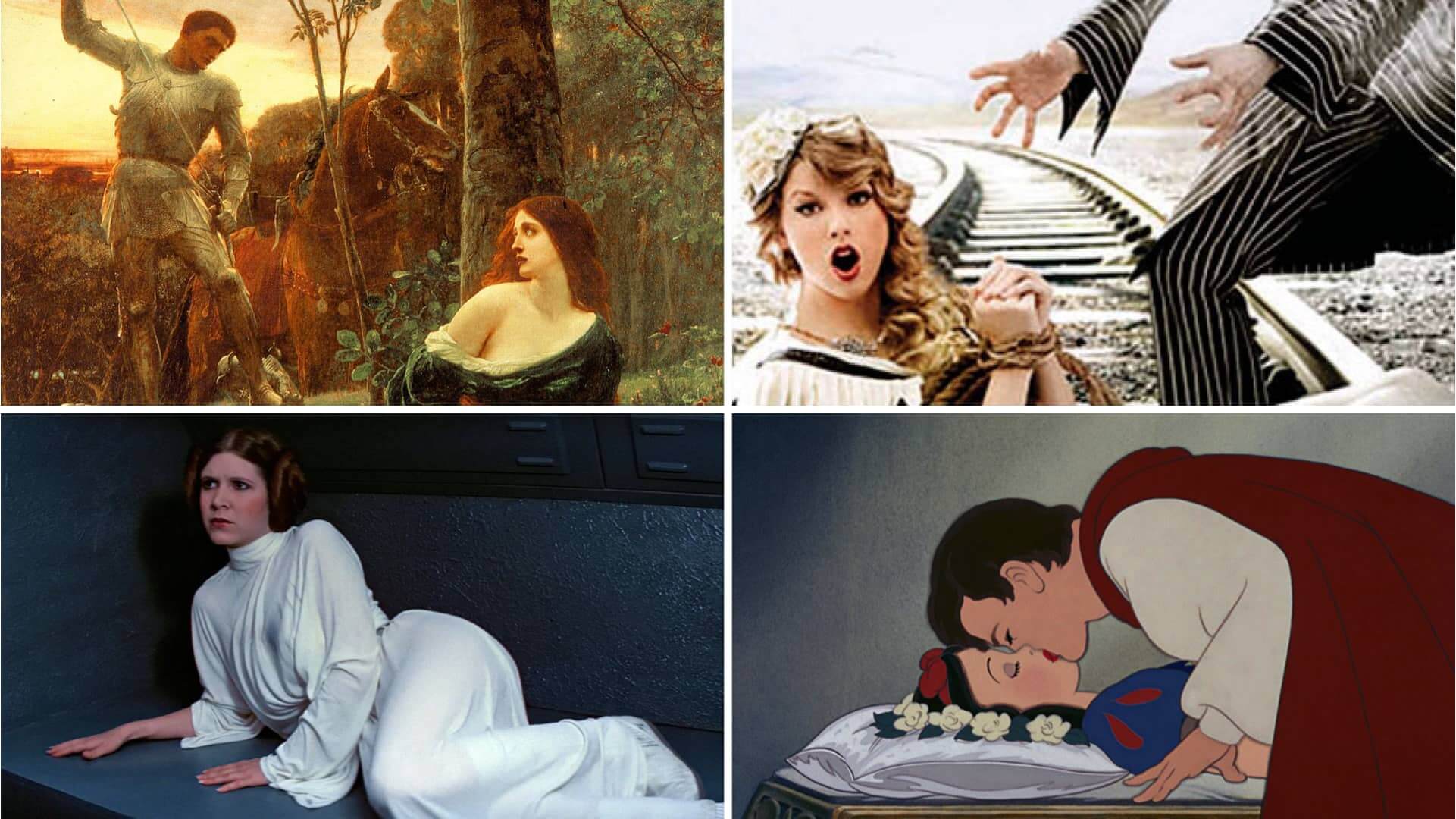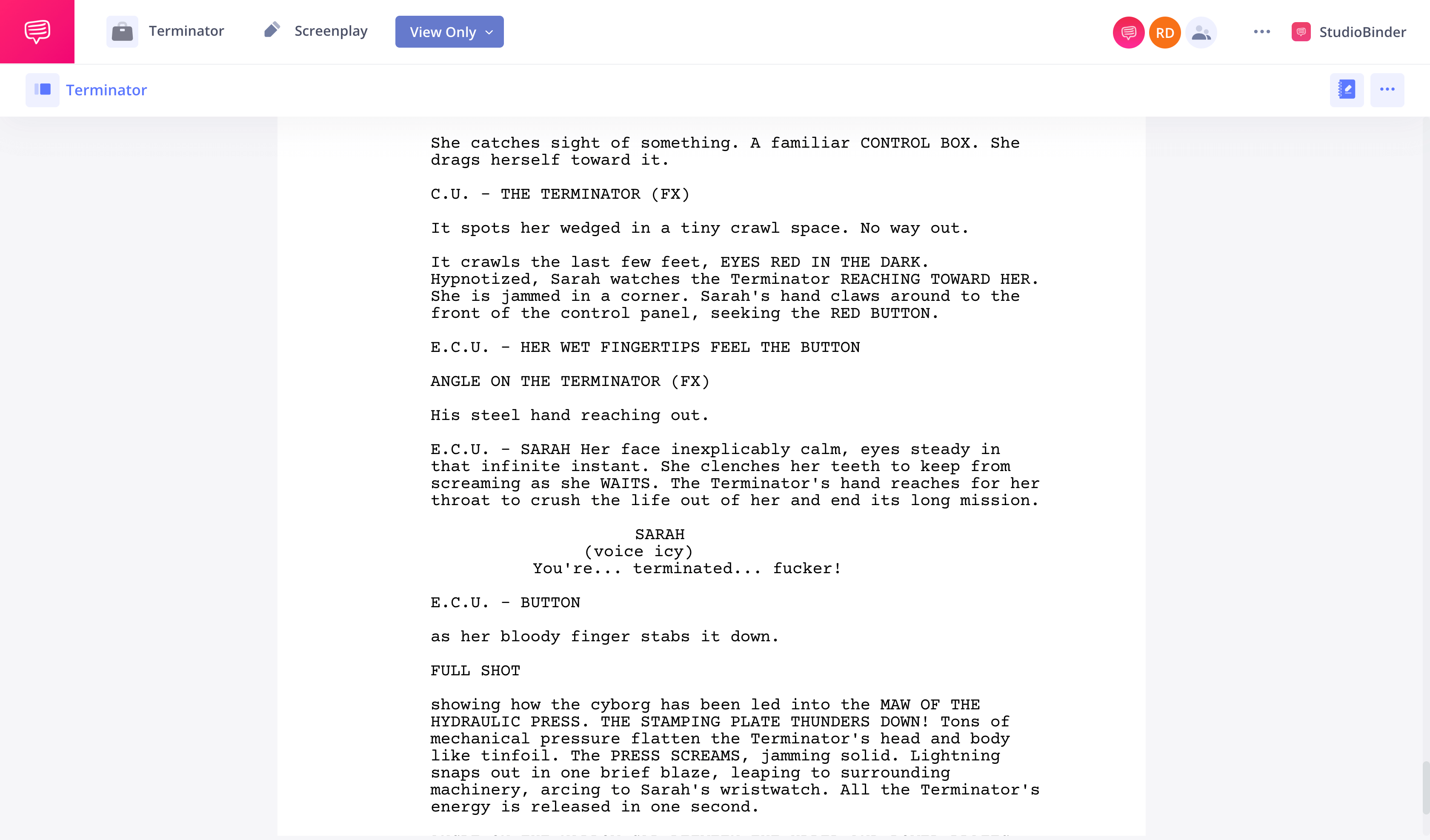Many stock characters have been established in fiction for centuries, from the heroes to the villains to the side characters. Among those that have managed to continue having a presence is the “damsel in distress.” The name gives you the basic gist of a woman in peril. But there’s a lot more to this stock character, its cultural implications, and how the character type has been received over time. So, what is a damsel in distress, how has the damsel in distress archetype been used, what are some damsel in distress movies, and how has a changing society commented on the damsel in distress meaning?
Damsel in Distress Meaning
First, let's define “Damsel in Distress”
The term comes from the French term “demoiselle en détresse,” which means exactly what you think it means. The term “damsel” would be translated as “young woman” and no longer serves a purpose in modern English except for when referring to this character trope.
DAMSEL IN DISTRESS MEANING
What is a damsel in distress?
A damsel in distress, sometimes known as a heroine in distress, is a character type, trope, and/or theme where a primary female character must be rescued by the hero. It has seen usage in nearly every form of media and has been perpetuated for centuries by mythology, folklore, poems, plays, literature, motion pictures, and video games. This character has evolved in film over the decades but it still persists in less extreme examples to this day.
Damsel in Distress Characteristics:
- A princess or maiden in need of rescuing by a gallant knight.
- Cannot help or save herself, which is why she desperately needs a man (classically in a suit of armor) to come to her rescue.
- A dragon or some other type of beast has to be slain in order to successfully rescue the damsel.
- Regardless of time period or location, a woman is in peril and needs the help of a man in order to be saved.
It is now time to look back at the origin of damsel in distress and see when and how it came about.
Related Posts
Damsel in Distress Meaning in History
History and Usage
For some, the idea of damsel in distress movies doesn’t need much investigating. In fact, it might make a lot of sense, at least for simple stories. After all, in this day and age, who isn’t familiar with a story involving a hero rescuing someone?
It’s a theme which has dominated fiction for centuries, covering many different genres (though action-adventure remains the top genre for this).
Medieval era
Ancient tales from Greek mythology contributed to the imagery of a woman in peril and in need of rescuing. But the medieval period is probably when this theme became so widespread.
The idea of rescuing maidens was part of the chivalric code of knight-errants. This is probably a major reason why stories with damsels in distress are so often about knights, castles, and dragons.
Pre-20th Century
The damsel proliferated long after the sunset of the medieval period. Even as the modern novel came into shape in the 1700s, writers took the damsel archetype and adapted it for new stories.
In the 1753 novel The History of Sir Charles Grandison, the term “damsel in distress” is actually used verbatim.
20th Century
The damsel in distress was just as common as ever in the 20th century. The new medium of film helped perpetuate the role women had in society and entertainment, along with what audiences were clamoring for.
The 20th century did see advancements in the roles and rights of women. However, most fiction still put women in damsel in distress movies, roles that kept them weak (and in need of a man) for one reason or another.
Even a contemporary medium like video games has been guilty of this. The story of many video games used to be as simple as “rescue the princess.” Early titles from the 1980s like Donkey Kong were all about this, as were succeeding games like Super Mario Bros. and The Legend of Zelda.
For the most part, the damsel in distress archetype was able to flourish and continue for centuries because of society's views on men, women, and how stories are told. However, it was not that long ago when this character type started to be examined, subverted, and averted in a big way.
Related Posts
Damsel in Distress Examples
Subversion and Aversion
Before we go into how you can subvert this classic trope here are a few damsel in distress examples:
- Rachel Dawes in The Dark Knight
- Debbie Edwards in The Searchers
- Princess Jehnna in Conan the Destroyer
- Broomhilda in Django Unchained
- Wilhelmina Scott in Indiana Jones and the Temple of Doom
- Snow White in Snow White and the Seven Dwarves
- Kimberly Mills in Taken
- Daphne in Scooby Doo
- Ann Darrow in King Kong
Super Mario Bros. and The Legend of Zelda came out for the Nintendo Entertainment System. During the same time period, there was another popular title that subverted the role women traditionally held in action-adventure tales.
Metroid starred Samus Aran, a galactic bounty hunter decked out in a power suit with a hand cannon for a weapon. However, gamers back in the 1980s wouldn’t have immediately known Samus “was a girl” unless they beat the game under a specific time limit.
Not a heroine in distress • Samus Aran
This was just one example of how popular media could change the perspective of women in traditionally male-dominated arenas. Specific characters started to emerge during this time that would endure for many more years as examples of strong female characters.
The ones most people would recognize are Ripley from the Alien franchise and Sarah Connor from the Terminator franchise. Both characters are able to fight off extreme and dangerous threats at the same level — if not at a higher level —than any of their male counterparts.
Take a look at this scene from Terminator, which we imported into StudioBinder’s screenwriting software.
In the beginning of The Terminator, Sarah seems like she may be a typical damsel in distress, since she is terrified of the machine chasing her and has to be saved by Reese. But by the end, she’s learned to fend for herself and then some, a trait which is expanded upon in the sequel.
There also exist characters that subvert what a damsel in distress is supposed to be, like Princess Leia in the Star Wars franchise. Leia is an example of a strong female character that starts off as a damsel but manages to hold her own throughout the original trilogy.
Even her imprisonment of Jabba in Return of the Jedi can be seen as a subversion. While it looks like a straight damsel in distress situation, Han Solo is arguably more fragile and in danger. Also, she strangles Jabba to death.
What is a Damsel in Distress • Heroine in distress
Since the ‘70s and ‘80s, women’s roles in media have continued to change, with many more popular shows and movies starring strong female leads. Going from the 1990s to today, companies like Disney have eschewed the princess image they cultivated for decades with more strong female characters, as seen in Mulan, Moana, Frozen, and others.
What is a Damsel in Distress • Damsel in Distress meaning
And while video games are still a young medium, titles such as The Legend of Zelda have given their damsels much more to do than just wait for the hero to do their thing. In the case of Zelda, the titular character herself has played an active role in many of the titles since the late 1990s, from Ocarina of Time to 2017’s Breath of the Wild.
Then you have a game series like The Last of Us, which stars multiple female characters and has garnered critical acclaim for how it tells its stories in the video game medium.
The damsel in distress is a classic trope, to the point where it is unavoidable when talking about fiction in general. The trope isn’t exactly disappearing anytime soon. But time has allowed filmmakers and storytellers from all over to put women at the forefront of their narratives in a positive way.
Related Posts
Up Next
Best Female Film Directors
Now that you have an understanding of damsel in distress examples, we recommend you to take a look at our list of the best female film directors working today. From major motion pictures to smaller independent works, our list covers a lot of ground for learning more about today’s female filmmakers.

